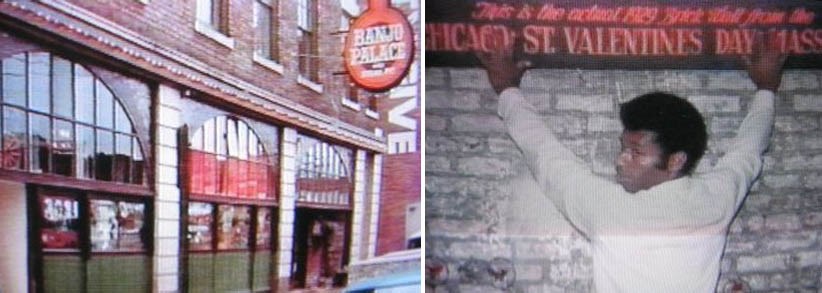A Vancouver time travelogue brought to you by Past Tense.
In 1971, an American showbiz entrepreneur named George Patey opened a 1920s-themed restaurant and club called the Banjo Palace at 157 Alexander Street, where the Alibi Room operates today. In the men’s room behind the urinals, he installed, brick-by-brick, the wall against which Al Capone’s goons massacred the Moran Gang in 1929 in what became known as the St Valentine’s Day Massacre. Public outrage at the massacre was intense and led to the empowering of the FBI to wage its so-called "War on Crime" against Scarface and other 1930s gangsters.
Patey bought the wall in 1967 after hearing that the Chicago warehouse where the massacre took place was being demolished and had the bricks shipped to Vancouver. The wall was a popular Gastown attraction, although it made for some awkward moments when women peeked in to view it while male patrons were trying to pee.
The Banjo Palace, which also featured Canada's largest circular barbecue, only lasted until 1976. Unfortunately, Patey took his infamous bricks with him. Some have been sold individually and the rest now reside in a mob museum in Las Vegas.
Source: Photos by George Patey via My Al Capone Museum




